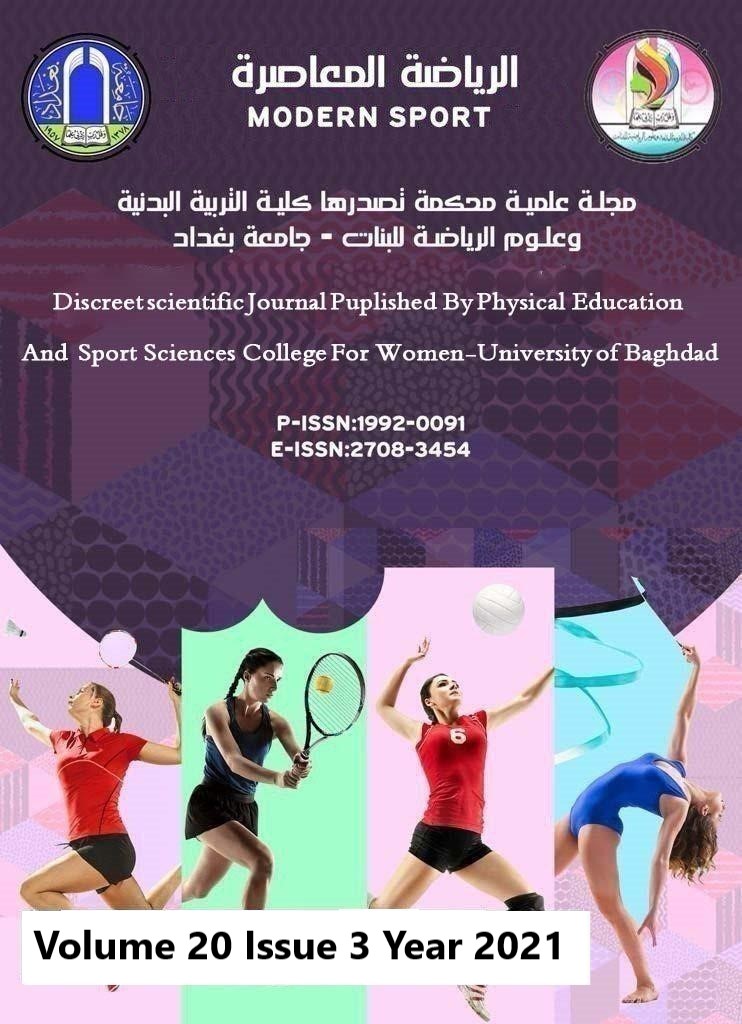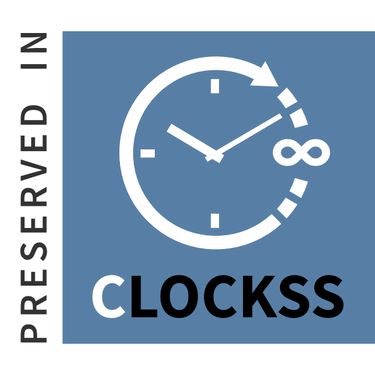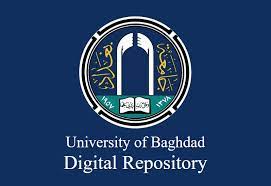The Effect of compound exercises using the (RANDOM SHOT) device and the electronc goal ln developing the speed of the motor response and the rapid ability of the two goal keepers youth football halls
DOI:
https://doi.org/10.54702/msj.2021.20.3.0022Keywords:
Compound exercises, The speed of movement response and the rapid ability of the feet, Youth football hallsAbstract
The research problem shaped through the entry of complex exercises with the introduction of scientific devices as a Random Shot, and the electronic goal when applying goalkeepers exercises for the national football team for halls. Through the experience of the researchers in the field and academic field, and on students, researchers and personal interviews with football coaches, as well as their follow up on the training course. The two researches noticed that there was a variation in the movement response and ability of the goalkeepers' feet. This may be attributed to the lack of interest of trainers in training these two abilities. As well as, the lack of equipment and tools that accompany exercises which allow for diversity and change to occur, it is regarded as one of the important rules in training.
Therefore, this study came to shed light on such exercises according to the scientific foundations that are related to the actual training components that are related to the characterized by physical and movement capabilities for the purpose of bringing about development in the level of these capabilities for goalkeepers by introducing training methods and assistive devices like the electronic goal and Random Shot. As well as, applying complex exercises accompanied by audio and visual effects to spread enthusiasm and move away from boredom and monotony for the trainees in an effort to develop the physical and movement side. An objective of research and monotony for the trainers were preparing compound exercises using Random Shot and electronic goal in developing the speed of the motor response and the rapid ability of the feet of the football goalkeepers for halls.
As for imposing search, there are statistically significant differences between the results of the pre and post-tests of the kinetic response and rapid ability to the feet of the goalkeepers of the youth football team for halls. As for the research sample was deliberately chosen, consisted of four goalkeepers where the reconnaissance experiment was conducted on two goalkeepers within the research sample. After that, pretests were conducted for the research sample, and then, apply exercises using assistive devices where they were implemented in the main part of the training unit, with 24 units divided into 3 training units per week for a period of 2 months. After that, the posttests of the research sample were performed. Statistical methods were used to process the data.
The two researchers concluded that combined exercises using devices helped effectively to develop the speed of movement response and the rapid ability of football goalkeepers feet for halls. One of the most important recommendations is the necessity of using modern training methods and the emphasis on the aspect of developing the speed of movement response and rapid ability of the goalkeeper, because it is one of the most physical characteristics on which the defensive and offensive duties of a goalkeeper depend
References
- Amrullah Al-Bisaty; (1998), Foundations of sports training rules and applications, 1st edition, Alexandrea, Al-Maarif facility. P:44
- Ali Sadiq Dhiab; (2011), The effect of exercises using aids according to performance on some physical and biomechanical variables and the achievement of the long jump at the age of (14) years, master thesis, Physical Education and Sport Sciences/ Baghdad University.
- Qassim Hasan Hussein; (1998), The science of sports training at different ages, 1st edition, Amman, Jordan, Al-Fikr Al-Araby for publishing. P:84-87
- Qasim Hasan Hussein, Abid Ali Naseif; (1987), The science of sports training for the fourth stage, 2nd edition, Mosul, Dar Al-Kutub directorate for Printing and Publishing. P:315
- Kadhim Al-Rubaey, Muafaq Al-Mawla; (1997), Football physical preparation, Mosul University, Dar Al-Kutub directorate for Printing and Publishing.
- Reesan Khaibut Majeed; (1997), Applications in sports physiology and training, Amman, Jordan, Al-Shorouq for publishing and printing. P:526
- Reesan Khaibut Majeed; (1988), Research Methods in Physical Education, Mosul, Mousul University publishing.
- Sameeh Sabeeh Amir; (2020), The effect of exercises by means designed and assisted by audio and visual stimuli to develop the accuracy of passing and receiving among football players aged (13-14) years, Mustansirya University, Physical Education and Sport Sciences.
- Mohammed Hasan Allawy, Mohammed Nasir Al-Deen Radhwan; (1982), Motor performance tests. 1st edition, Cairo, Al-Fikr Al-Araby for publishing. P:231.
- Mohammed Ali Al-Qit; (1999), The functions of the members of the sports training, an applied introduction, 1st edition, Cairo, Al-Fikr Al-Araby for publishing.
- Majeed Hameed Majeed; (2017), The effect of suggested exercises (physical, skillful, mental special) to develop some physical abilities and basic skills for futsal players.
- Muhannad Al-Bishtawy, Ahmed Al-Khawaja; (2005), Principles of sports training, 1st Edition, Amman, Jordan, Wael for printing and publishing. P:66
- Mustafa Mohammed Hussein; (2019), The effect of exercises using an electronic goal designed to develop motor response speed (simple and complex) for young handball goalkeepers, master thesis, physical education and sport sciences college, Mustansirya University.
- Amir Fakhir Shighaty; (2016), The science of sports training, 1st edition, Baghdad, Dar Dijlah for printing and publishing. P:47















